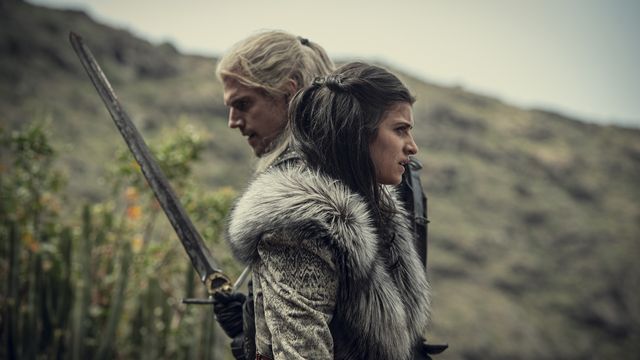

Photo: Katalin Vermes
The two episodic-but-not series challenge old and new traditions
Episodic storytelling used to dominate television, with syndication-ready series focusing on a new case, bounty, monster, destination, or mystery every episode. And the structure hasn’t gone away — you can still pretty much flip on network TV on any night and hit a procedural. There are three NCIS shows, countless medical dramas, and a bunch of dramas set in Chicago. Law and Order: Special Victims Unit has lasted longer than the original series that birthed it. But the biggest, buzziest shows in modern television tend to be serialized, with plot threads meant to string the audience along throughout a weekend binge.
So it’s a pleasant surprise to find that the shows currently capturing the cultural imagination are decidedly in that old-school mold. With their stories of wandering mercenaries taking jobs on a per-episode basis, The Witcher and The Mandalorian evoke an older era of television.
The parallels are hardly lost on people — a quick Google will reveal various fan-made, ostentatious opening credits sequences meant to recall the 1980s and 1990s, complete with VHS fuzz. But as much as these shows harken back to the Westerns that once filled the airwaves, or back to the fantasies around folks like Hercules, Xena, or Buffy, they leave a slight feeling of emptiness. We’re used to hankering for the conclusion of a serialized story arc, but The Witcher and The Mandalorian don’t end on cliffhangers. Rather than breathlessly rushing for What Happens Next, fans are simply hoping for more time in these worlds, and among these characters. As self-consciously throwbacky as these shows may seem, they’re still visibly designed for the ephemeral, gotta-have-it-now environment of streaming. That might just hinder their staying power.

Image: Lucasfilm Ltd.
At eight episodes apiece, The Witcher and The Mandalorian are by no means brief in the world of prestige television. But where syndicated, watch-it-because-it’s-on background TV is concerned, eight episodes is less than half a season of an X-Files or a pre-streaming Star Trek series. (The made-for-streaming Picard and Discovery series are both notably tighter than their forerunners, which tended toward 26-episode seasons.)
Part of that is because flagship streaming shows tend to be expensive. Netflix’s Witcher is chasing the sizable, dedicated Game of Thrones audience, and viewers have developed certain standards for the scope and level of detail necessary to fill that Westeros-shaped hole in their hearts. The Mandalorian is supposed to prop up Disney Plus through the unassailable might of nostalgia and recognizable intellectual property, so it has to evoke the hefty price tag of the average Star War.
Both these shows are rooted in the historical, open-ended template designed to let viewers watch episodes in any order, and to stretch stories out into the triple-digit episode count. Both those dynamics were once key to getting lucrative syndication contracts, but TV doesn’t generally work that way anymore. Netflix sold Bojack Horseman into syndication, and it’s an anomaly, considering the series, which began in 2014, may not even get the time of day under Netflix’s current cancel-happy regime. Now, amid competition from all corners and all companies, streaming shows are designed to be actionable, to hook viewers in and drive subscriptions. We aren’t meant to flip channels and stop on The Witcher simply because it’s there. We’re supposed to explicitly subscribe to Netflix to watch it, to consciously pluck Henry Cavill and that white wig from a sea of competing content.
It’s no coincidence that both shows are based on recognizable brands, or that so many streaming shows currently in the development pipeline are similarly high-profile adaptations. Amazon is busy developing The Lord of the Rings and The Wheel of Time, while Disney is bringing its Marvel Cinematic Universe characters back to television after shutting down their adventures on Netflix. Meanwhile, Netflix is betting on live-action versions of beloved animation: Cowboy Bebop, One Piece, and Avatar: The Last Airbender. A studio’s chances of grabbing our attention naturally go up if they’re selling us something we already recognize.
And storytelling formats have likewise moved to accommodate, trying to keep our focus however possible. Seasons have gotten leaner, often ejecting nonessential filler meant to pad out a serialized storyline. The lack of a standard runtime means episodes can go as long as they need to. (And often, unfortunately, longer.) The binge model works better when, rather than offering a satisfying conclusion, showrunners notify viewers that they need to keep going, if they want to resolve myriad cliffhangers and unanswered questions. In an essay on Vox, Emily VanDerWerff wondered if Narcos, Bloodline, and House of Cards were part of a new format, where plot points might bleed from one episode to another because they’re designed for digestion in as few sittings as possible.

Photo: Katalin Vermes / Netflix
Even the shows that might have once been designed for episodic storytelling have been going serial. All of Marvel’s Netflix heroes (Jessica Jones, Luke Cage, and so forth) had space in their individual series for one-off episodes about random street crimes. Such standalone episodes might even have made those now-canceled shows better, given how the series’ drama was often spread thin to guarantee a 13-episode run. But that would kill the momentum, which would kill the main draw: the compulsion to know how a story ends, to subscribe and see how things play out. Netflix is prone to canceling shows after a handful of seasons because the allure of the new draws in more subscribers than endless seasons of a tried-and-true series. The company has gone into prodigious debt to cater to that fact.
There are positive facets to serialization. Telling a single story can make a series more focused, and keeping it tight leaves more budget for better production values. Also, serialized shows are much less likely to fall back on lazy clip-show episodes. But part of the thrill of The Witcher and The Mandalorian is in how they reject the new serial structure, which has gotten a little tiresome from poor implementation. Just because every show is serialized doesn’t mean every plot point and every character has the built-in intrigue to keep us engaged.
The Mandalorian does have an ongoing story, but along the way, the protagonist visits different planets and takes on different bounties. Geralt in The Witcher encounters new monsters in every episode, and new people who are, of course, the real monsters. This old-school storytelling has its own separate breed of audience anticipation, built around self-contained stories, and constant novelty rather than endless iterations on a twisting plot.
But for all the nostalgic pleasures of The Witcher and The Mandalorian, neither show has escaped the streaming model unscathed. Those short seasons can be a problem for hungry fans, and can let shows drop off the cultural radar quicker. Syndicated shows often became staples because they found second lives in reruns, and in constant audience exposure. They were perfectly acceptable background-noise because past the first viewing, the surprises were minimal and investment was low, and episodes almost always mosied back to the same status quo. They were effective for the basic purpose of occupying a timeslot, for serving as comfort viewing. They didn’t need to grab viewers by the throat.

Image: Lucasfilm
At eight episodes apiece, the first seasons of The Witcher and The Mandalorian leave a much smaller footprint. There’s precious little room to sink into their worlds, or for episodes that are just about getting to know the characters. It’s hangout TV with less hanging out. These shows are meant to be reliably watched in order, and every slyly seeded character and concept is likely to turn up again for the big finale. The Witcher’s jumbled timeline in particular is certainly an outgrowth of its streaming-exclusive, full-season release — rather than trying to keep track of all the little details for weeks, you only have to keep hitting the “next episode” button.
Both shows got a boost in staying power when they went viral, The Mandalorian for a puppet, and The Witcher for a song. But while we can pass the time between seasons with tangential material — the humongous Star Wars extended universe, the lengthy Witcher games and the books they and the show draw from — the shows themselves remain static and short, an outgrowth of our current fixation on having culture fed to us as quickly as possible so we can move on to the next thing.
And that feels ironic, given that some of the most coveted streaming deals have been for classic shows with many seasons, and episodes designed to be watched over and over. (Friends, for instance, and Seinfeld, and The Office.) As popular as The Witcher and The Mandalorian are, the nature of their construction makes it hard to imagine them developing the same kind of long-term cultural footprint. They weren’t not created for down-the-line viewing, they’re made for now.
And what they’ve gained in immediacy (and arguably quality), they’ll lose in omnipresence. These shows will have to make it to third seasons before they rack up as many episodes as a single season of their many forerunners. The Witcher and The Mandalorian are uneasy hybrids, expensive prestige shows patterned after traditional comfort TV. But streamers have no real use for background noise; even Star Trek shows now tell continuous stories.
The result is something that quite successfully trades on the thrill of episodic storytelling, yet lacks the qualities that once made shows into perfect comfort food. Years down the line, after they’ve served their purpose of attracting new viewers to services concerned with customers of the moment, it’s hard not to wonder what we’ll think of them, or if we’ll still think of them at all.
read more at https://www.polygon.com/ by Steven Nguyen Scaife
Gaming








